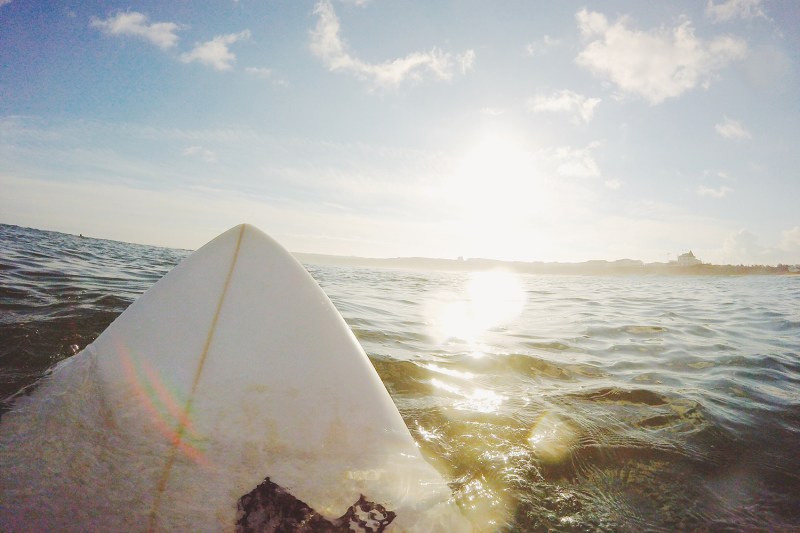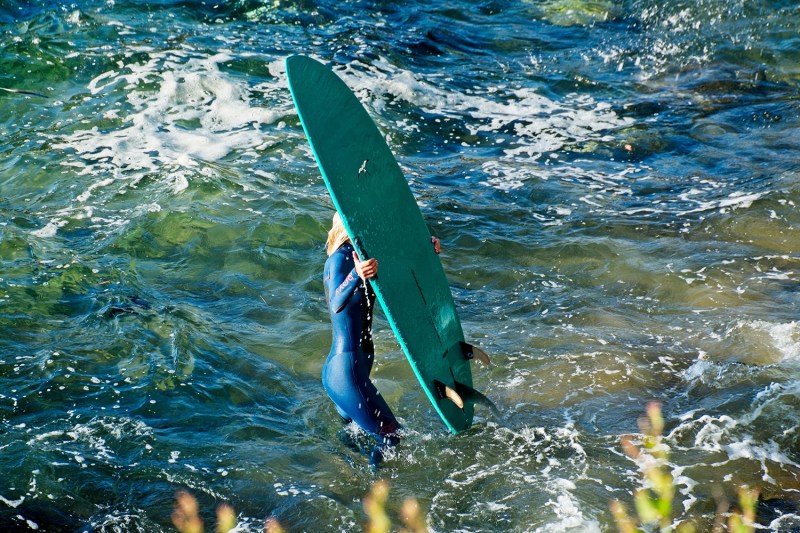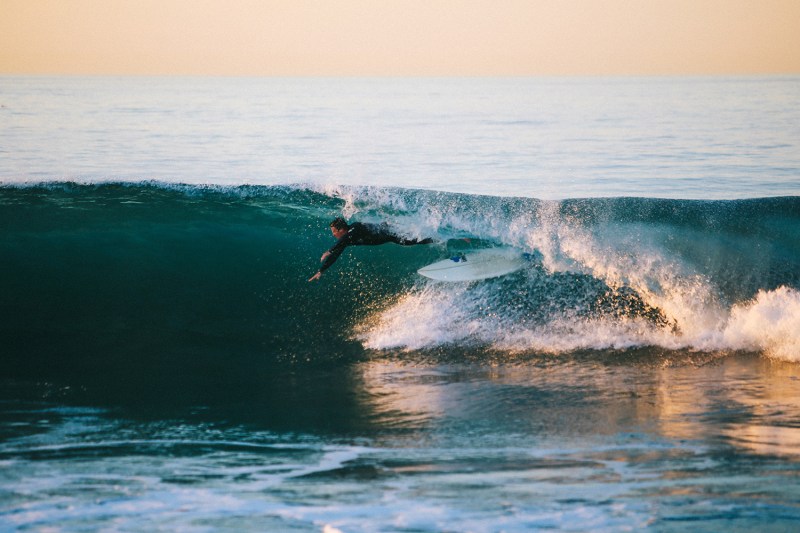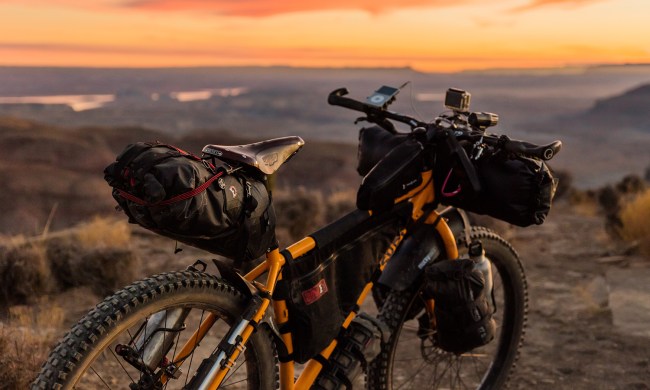
In order to ride a wave, one does not need to be Kelly Slater, because even the least coordinated folks can enjoy a good offshore set.
Karlee Dahlin, who’s a therapist by trade but a surfer at heart, surfs weekly. As part of the third-generation of a Venice, California family, she’s always been close to the water. And it only further piqued her interest when her big brother taught her the ropes when she was young, initially on a boogie board.
“Surfing can feel really complicated and scary for a beginner but it’s actually the most peaceful thing I do and makes me feel like I’m connected to something much bigger than myself,” she says, admitting that there are still butterflies now and again.
The right gear certainly helps. In California, that means the proper wet suit for extended stays in the water. In the warm currents across the Pacific in Hawaii, that might mean moisture-wicking, sun-repelling surf ware, or a solid longboard. “My dad always told me to never look like a tourist,” she adds. Meanwhile, fashion usually falls secondary to mindset.
“In my opinion, the most important thing it is to be a very strong swimmer and love the ocean,” Dahlin says. “And don’t be ashamed of riding a foamie because when you hit someone with your board, it won’t hurt!”
Here are a few other tips for getting up on a board, whether it’s your first time or it’s just plain been a while:
Prepare
Surfing requires a lot of patience. By default, the sport demands stamina and a certain brand of fitness. If you’re going out as an amateur or even intermediate wave rider, some prep work will only help your chances. You’ll be able to stay in the water longer and pop up when you need to.
Surfing is a full-body activity with acute demands on your shoulders and a call for balance. Swimming is a fantastic way to tune your body up beforehand, getting you all the more acquainted with water while waking up some of those muscles you may not use as much. For balance, try single-legged squats and some time on a hemisphere ball. Even a few minutes, while you’re listening to music or bingeing Netflix shows, will help.

Moreover, start holding your breath. You don’t need to train like the big wave riders (and be able to go minutes at a time underwater). However, adding a couple of seconds to your personal best will help you feel more comfortable after, inevitably, your first wipeout. And dusting off your old skateboard beforehand is another solid way to wake up your surfing legs.
Read the Water
Waves come in sets and the more time you spend in the ocean, the better you’ll be able to understand these rhythms. Soon, you might even be able to predict the next batch and about how many waves it will produce.
First, see which way the waves are breaking. If they’re crashing down all at once (a type of wave called a closeout), you’re likely not surfing this outing. But in reliable spots, the waves will often break right or left. Find the wave’s peak and get out ahead of it, not unlike a relay runner waiting for a baton.
Reading the water also means detecting dangers. Watch for coral (it’s sharp), shallow water (time your outing with the tide tables), and other obstacles such as fellow surfers, rocks, and big critters like sea turtles. And practice good etiquette. Surfers are stereotyped as being protective and hostile of their favorite spots. That may be true for coveted big wave locales and secret beaches but you’re not going to encounter that in most places — especially if you pack some common sense and basic courtesy.
Know How to Bail
Your first few rides will likely be brief. Knowing how to pull the plug safely is key. Fall flat, if you can, or butt first, never leading with your head. Once you’re in the water, more waves may be on their way. Relax, get back on your board when you can (chest down), and either wait until the set is over to paddle back out or head out right away, duck-diving beneath the surf en route.

A helmet might seem silly (and you may look like a tourist) but it isn’t a bad idea, especially if you’re trying out one of Hawaii’s coral-strewn beaches or working your way up to bigger waves.
Take a Lesson
A lesson is always advised, especially for first-timers. In Hawaii, there are some great options, like Hawaiian Surf School and Maui Surf Lessons. With the latter, you can even canoe surf. Ask around during your stay as word-of-mouth recommendations can make all the difference. And in most cases, avoid hotel or resort-sponsored outings. They tend to be overpriced and less informative.
For those looking to keep the training wheels on, so to speak, try starting out on a longboard or a stand-up paddleboard. The latter, especially, can be a bit easier as you’re already upright and you gain the added stability of a paddle in hand. As aging surfers will testify, this is also a great option for those with bad backs or a body that doesn’t quite bounce like it once did.
Hang ten!


